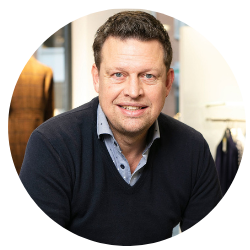What are the most sustainable fabrics on the planet?
What exactly is a label? What factors do we consider when selecting sustainable fabrics? Choosing sustainable fabrics is one of the first things we can do to make our wardrobes more eco-friendly, whether you’re a clothes maker or a fashion lover who is concerned about fashion’s impact on the environment.
However, there is considerable disagreement about which fabrics are truly sustainable. Is it always true that natural equals good and synthetic equals bad? What happens to our clothes when we wash or dispose of them?
Natural Fibres
Cotton Recycled
Cotton is one of the most popular and widely used fabrics. This natural fiber is light and breathable, making it a wardrobe essential. However, growing cotton can be difficult: conventional cotton is one of the thirstiest and most chemical-intensive crops to cultivate. It necessitates the use of numerous pesticides, which has a negative impact on the environment and the people who cultivate it. Organic cotton, a more sustainable alternative to conventional cotton, has grown in popularity in recent years. It seeks to reduce the environmental impact of cotton production by attempting to eliminate harmful pesticides and other chemicals from the manufacturing process.
However, if you want the most sustainable cotton, choose recycled cotton. Cotton that has been recycled or upcycled is made from post-industrial and post-consumer cotton waste. Recycled cotton, according to the Higg Materials Sustainability Index, is a more sustainable alternative to both conventional and organic cotton. It has the potential to reduce water and energy consumption while also keeping cotton clothing out of landfills, which is why we consider it one of the most sustainable fibers on the market.
Hemp that is organic
Hemp appears to be everywhere at the moment. Marijuana’s “sober cousin” is extremely versatile: it’s used as a food, a building material, in cosmetics, and has been cultivated and used as a fabric for hundreds of years.
Hemp is great because it can be grown all over the world and requires very little water, no pesticides, and naturally fertilizes the soil it grows in, making it much better for the environment than other crops.
Hemp, one of the world’s oldest fibers, keeps you warm in the winter and cool in the summer, and it gets softer the more you wash it. For all of these reasons, we believe hemp is one of the most environmentally friendly fabrics available.
Natural Linen
Linen is another natural fiber that has been cultivated for centuries. It, like hemp, is derived from a versatile crop: the flax plant. Linen grows in poor soil and requires little water and pesticides. Furthermore, because every part of the plant is used, nothing is wasted. Linen is strong, naturally moth resistant, and fully biodegradable when untreated (i.e. not dyed). It is not only good for the environment, but it is also light and can withstand high temperatures, absorbing moisture without harboring bacteria. What is there not to like?
Natural, sustainable fabrics are biodegradable and avoid the use of plastics, which are associated with the fossil fuel industry. However, not every natural fabric made the cut, with bamboo, wool, and leather bringing their own set of complications that make us hesitant to recommend them outright.
Fashion is all about creativity, so what is the industry doing to develop new sustainable fabrics? Here are some of the new high-tech synthetic fibers that have made their way onto our list.
Futuristic and Innovative Fabrics
Tencel
TENCEL® is a lightweight cellulose fabric made by dissolving wood pulp. Lenzing AG in Austria manufactures the fiber. It has recently gained popularity because it is said to be 50% more absorbent than cotton and requires less energy and water to produce. Furthermore, the chemicals used to create the fiber are managed in a closed-loop system. This means that the solvent is recycled, reducing hazardous waste.
Tencel also has moisture-wicking and anti-bacterial properties, making it ideal for activewear!
Piñatex
Piatex is the material to look for when looking for vegan leather alternatives. Ananas Anam’s futuristic material made from pineapple leaf fiber was featured in Vogue in 2017! Who knew pineapple food could also be worn?
It is not only a cruelty-free substitute for leather, but it is also natural and sustainable. Piatex is made from a food byproduct, so it reduces waste while also benefiting the farming communities that grow the fruit!
Econyl
Econyl is another recycled fabric to consider. This fiber, developed by the Italian company Aquafil, takes synthetic waste from the ocean, such as industrial plastic, waste fabric, and fishing nets, and recycles and regenerates it into a new nylon yarn of the same quality as nylon.
This regeneration system is a closed-loop system that uses less water and generates less waste than traditional nylon production methods. Waste is collected, cleaned, and shredded before being depolymerised to extract nylon, polymerised, transformed into yarn, and re-commercialised as textile products.
Econyl, like other synthetics, emits microfibres, which is a clear disadvantage. While this means it isn’t the best choice for clothing that is frequently machine washed, it can be a more practical and sustainable option for clothing or shoes that are rarely washed or handwashed. When you need to machine wash something, grab a Guppy Bag.
Qmonos
Spiders aren’t only small (or, in Australia, giant) and occasionally frightening arachnids; they’re also a terrific source of inspiration for sustainable fashion. In reality, Qmonos, a synthetic spider silk, was recently created by fusing spider silk genes with microorganisms. The fiber is believed to be five times stronger than steel, nature’s strongest fiber, while still being extremely lightweight, more flexible than nylon, and completely biodegradable.
Qmonos is a more ecological and ethical alternative to silk and nylon since no spiders are farmed or injured in the manufacturing process.
we always look for the most sustainable materials to make your company as sustainable as possible. If you have any questions about materials we use for the outdoor clothing, please contact us

